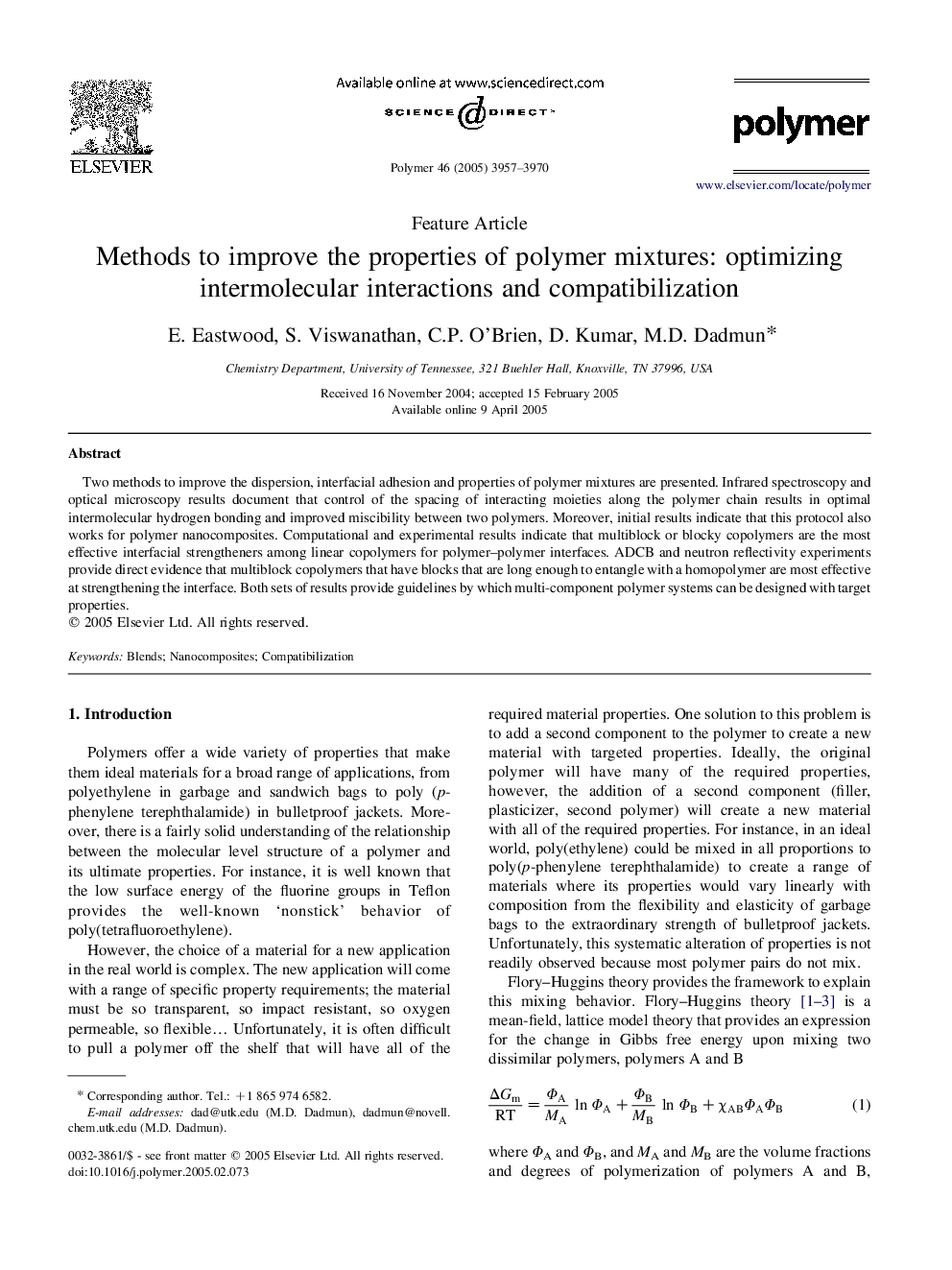| Article ID | Journal | Published Year | Pages | File Type |
|---|---|---|---|---|
| 5191846 | Polymer | 2005 | 14 Pages |
Abstract
Two methods to improve the dispersion, interfacial adhesion and properties of polymer mixtures are presented. Infrared spectroscopy and optical microscopy results document that control of the spacing of interacting moieties along the polymer chain results in optimal intermolecular hydrogen bonding and improved miscibility between two polymers. Moreover, initial results indicate that this protocol also works for polymer nanocomposites. Computational and experimental results indicate that multiblock or blocky copolymers are the most effective interfacial strengtheners among linear copolymers for polymer-polymer interfaces. ADCB and neutron reflectivity experiments provide direct evidence that multiblock copolymers that have blocks that are long enough to entangle with a homopolymer are most effective at strengthening the interface. Both sets of results provide guidelines by which multi-component polymer systems can be designed with target properties.
Related Topics
Physical Sciences and Engineering
Chemistry
Organic Chemistry
Authors
E. Eastwood, S. Viswanathan, C.P. O'Brien, D. Kumar, M.D. Dadmun,
